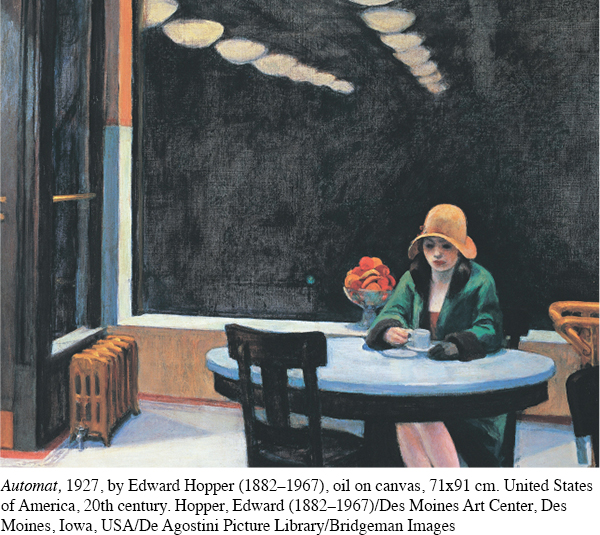Characterization
So far in this Workshop, you have been focusing on what kinds of characters are found within a literary work; now it’s time to focus on the tools an author uses to develop those characters in the work, a process called characterization.
Broadly speaking, there are two ways that writers go about building a character. Direct characterization is when the author “tells” the reader about the character. For example:
He was a tall, thin man who was angry and disappointed in the world.
Indirect characterization, on the other hand, is when the author “shows” the reader about a character trait without explicitly stating it. For example:
Glancing quickly back toward the front door, she ordered a second muffin to give to the homeless man outside on her way out.
Writers will usually use both methods of characterization in a literary work, and neither method is better or worse than the other. Nevertheless, most of your character analysis will focus on indirect characterization because its nuance allows room for interpretation.
ACTIVITY
Imagine that you are going to write a story that includes the young woman in Automat, a 1927 painting by Edward Hopper (p. 652). Using the chart below, begin to build a character for the woman in this painting. In some cases, you can draw the details directly from the painting, but you will need to use your imagination for more details—
such as her name, her internal thoughts, the actions she will do, and so on. Name and age: Physical descriptions: Internal thoughts: Actions, gestures, movements: Her motivations or desires: What the waiters in the café might say about her or to her: What she might say in response to the waiters or another customer: 652
 Automat, 1927, by Edward Hopper (1882–
Automat, 1927, by Edward Hopper (1882–1967), oil on canvas, 71x91 cm. United States of America, 20th century. Hopper, Edward (1882– 1967)/Des Moines Art Center, Des Moines, Iowa, USA/De Agostini Picture Library/Bridgeman Images After you have completed the chart, write two sentences of direct characterization describing the young woman in the painting. Then, write two sentences of indirect characterization that reveal something about her.
Finally, reflect on the similarities and differences between these two types of characterization: Why would an author use one over the other? What different purposes do they serve?
KEY QUESTIONS
What are the character’s purposes or functions within the work? How and why does the character change or not change through the work?
What are the character’s most significant actions or inactions, such as running away from a fight, donating money to the poor, squashing a spider, and so on?
What are the motivations of the character? In other words, what does the character really want?
What repetitions do you notice in the character’s description? Is the main character presented as an opposite of another character?
How do the character’s thoughts or actions connect to an idea that the author is developing in this piece of literature (a theme)?